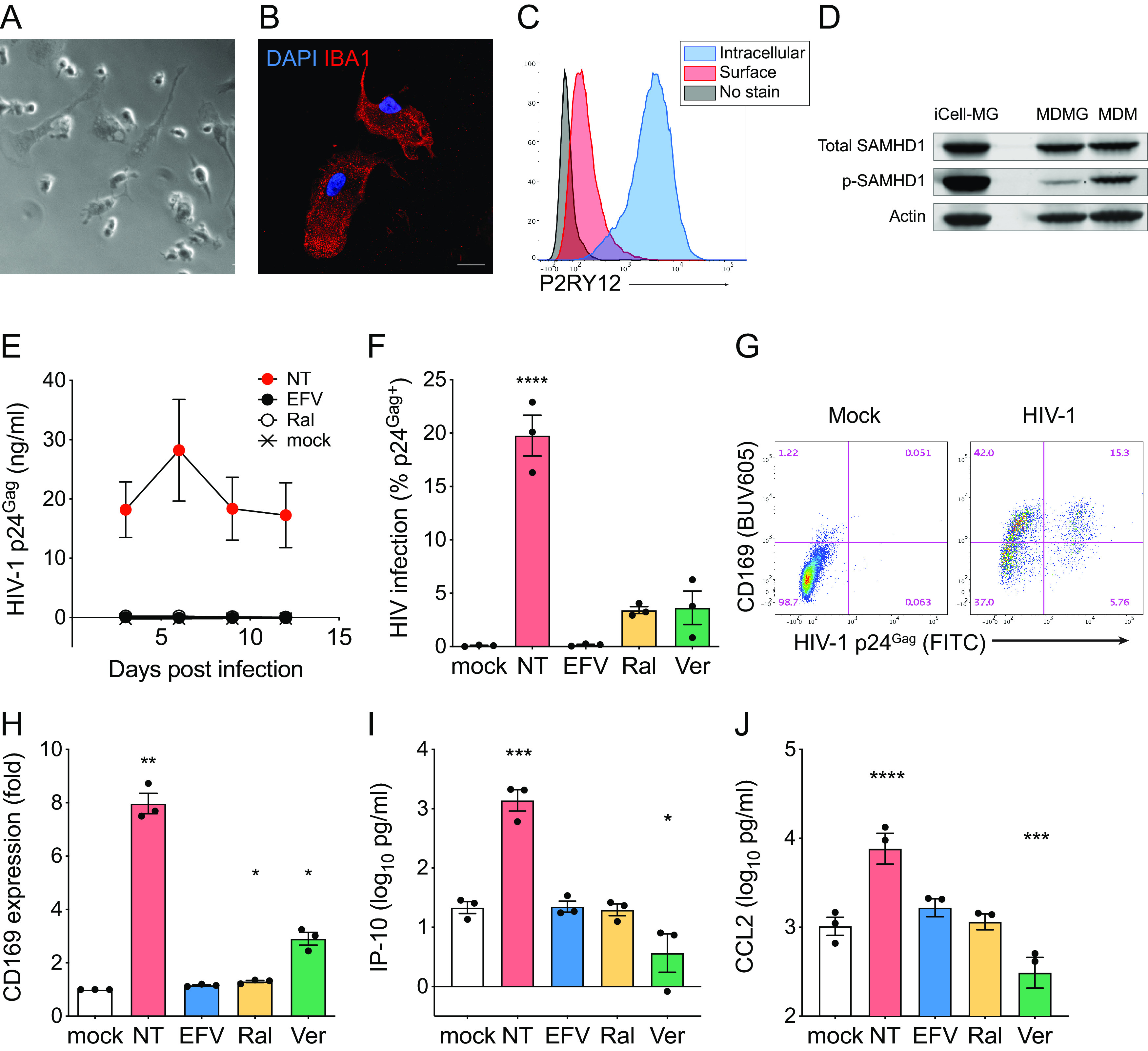FIG 3.

iPSC-derived microglia are highly susceptible to HIV-1 infection. (A) Representative phase-contrast images of iCell-MGs (Fujifilm Cellular Dynamics). Bar = 20 µm. (B) Representative immunofluorescence image of iCell-MGs stained for nucleus (DAPI, blue) and IBA-1 (red). Bar = 20 µm. (C) Representative flow cytometry profile of iCell-MGs stained for intracellular and surface P2RY12. (D) Western blot analysis for total SAMHD1, phosphorylated SAMHD1 expression in iCell-MGs, MDMGs, and MDMs. Actin was probed as a loading control. (E) Replication kinetics of HIV-1 in iCell-MGs. Cells were infected with HIV-1 (Lai/YU-2env, replication competent CCR5 tropic HIV-1, MOI = 1), and production of p24Gag in the culture supernatant was quantified by ELISA. (F to H) iCell-MGs were infected with HIV-1 (Lai/YU-2env, MOI = 1), and (F) HIV-1 infection (intracellular p24Gag expression) and (G and H) CD169 expression were analyzed by flow cytometry. (I and J) Production of the proinflammatory cytokines (I) IP-10 and (J) CCL2 in the culture supernatants was measured by ELISA (6 dpi). The means ± SEM are shown, and each symbol represents an independent experiment. P values: one-way ANOVA followed by Dunnett’s posttest comparing to mock (panels F and H to J), *, P < 0.05; **, P < 0.01; ***, P < 0.001; ****, P < 0.0001. NT,: no treatment (DMSO); EFV, efavirenz (1 µM); Ral, raltegravir (30 µM); Ver, verdinexor (KPT-335, 0.1 µM).
